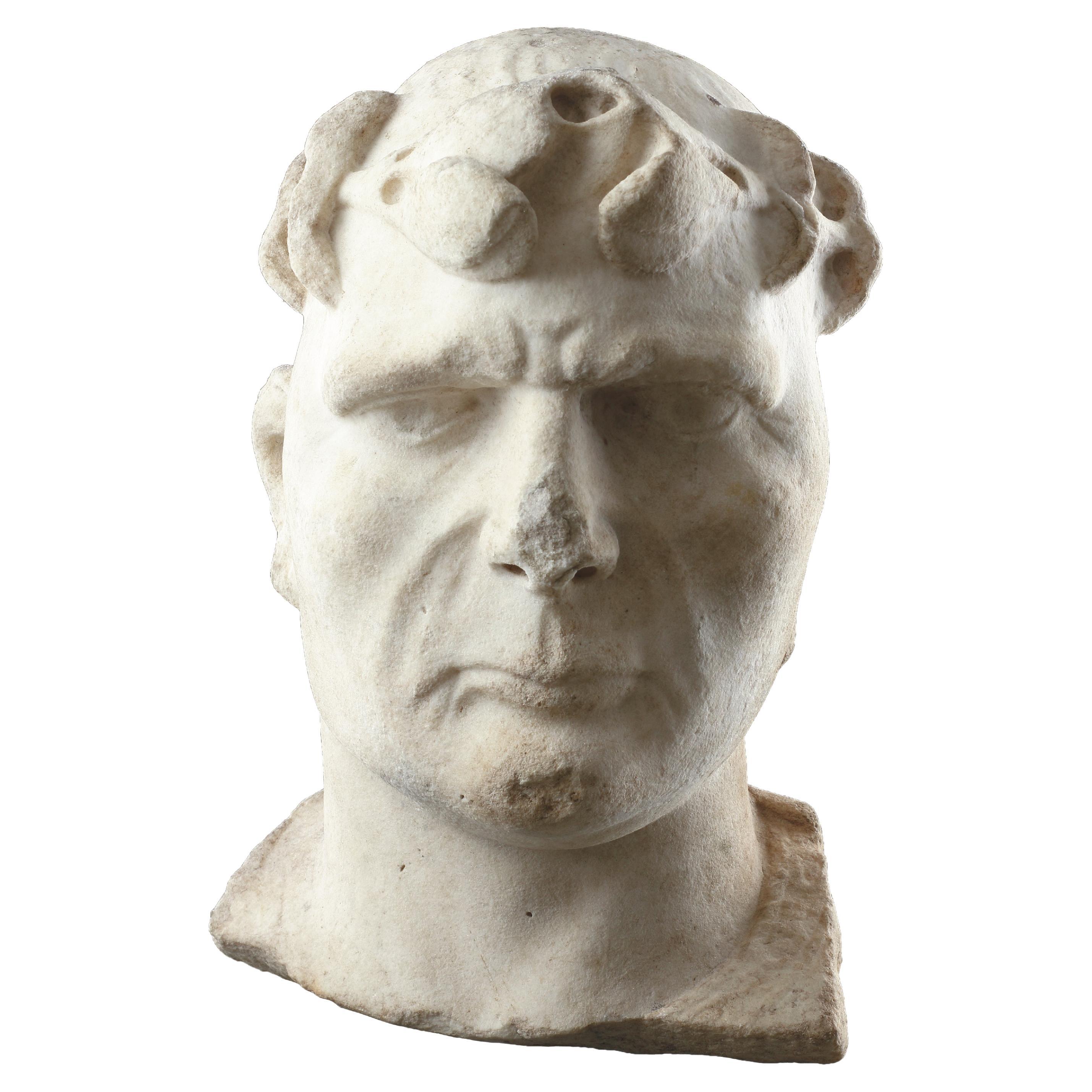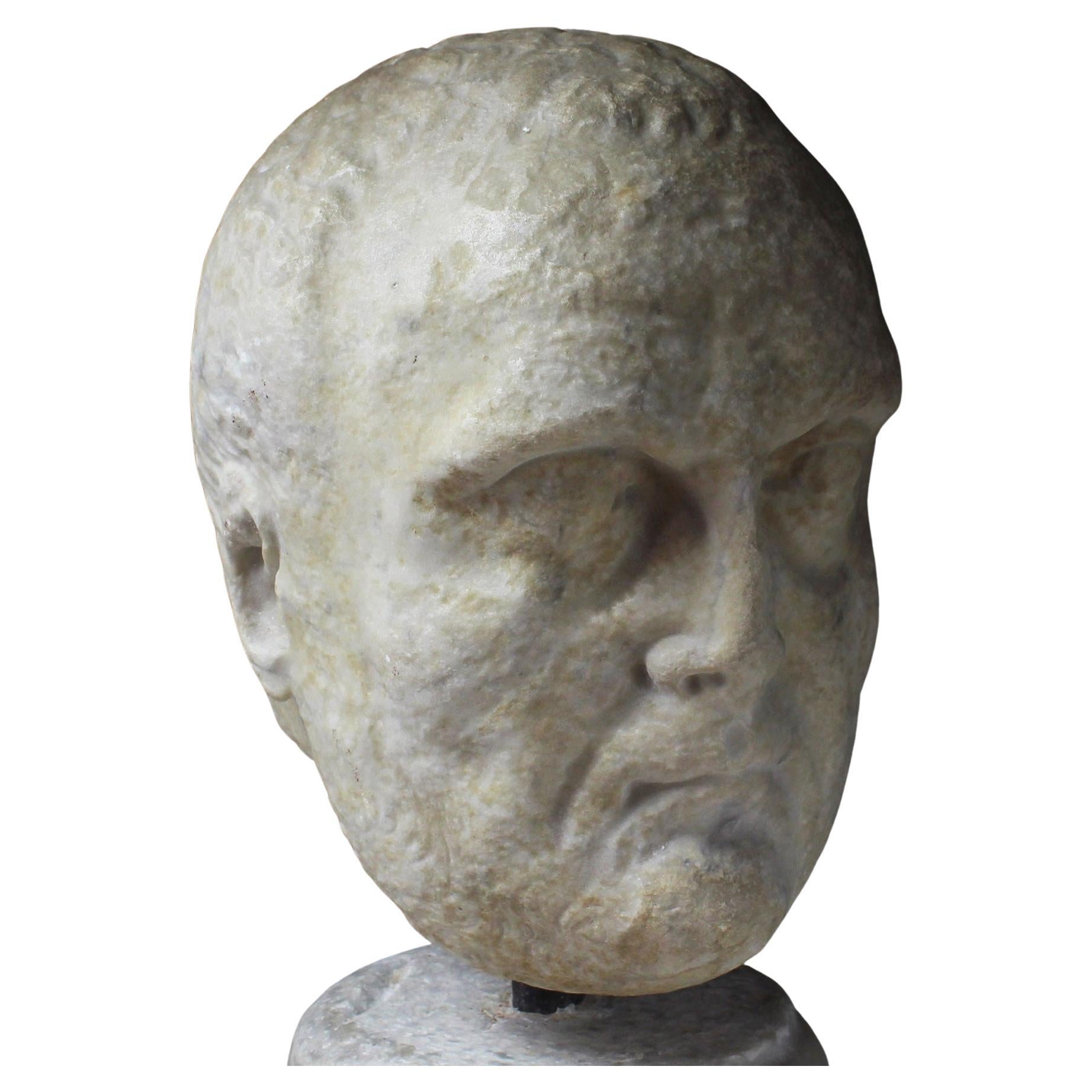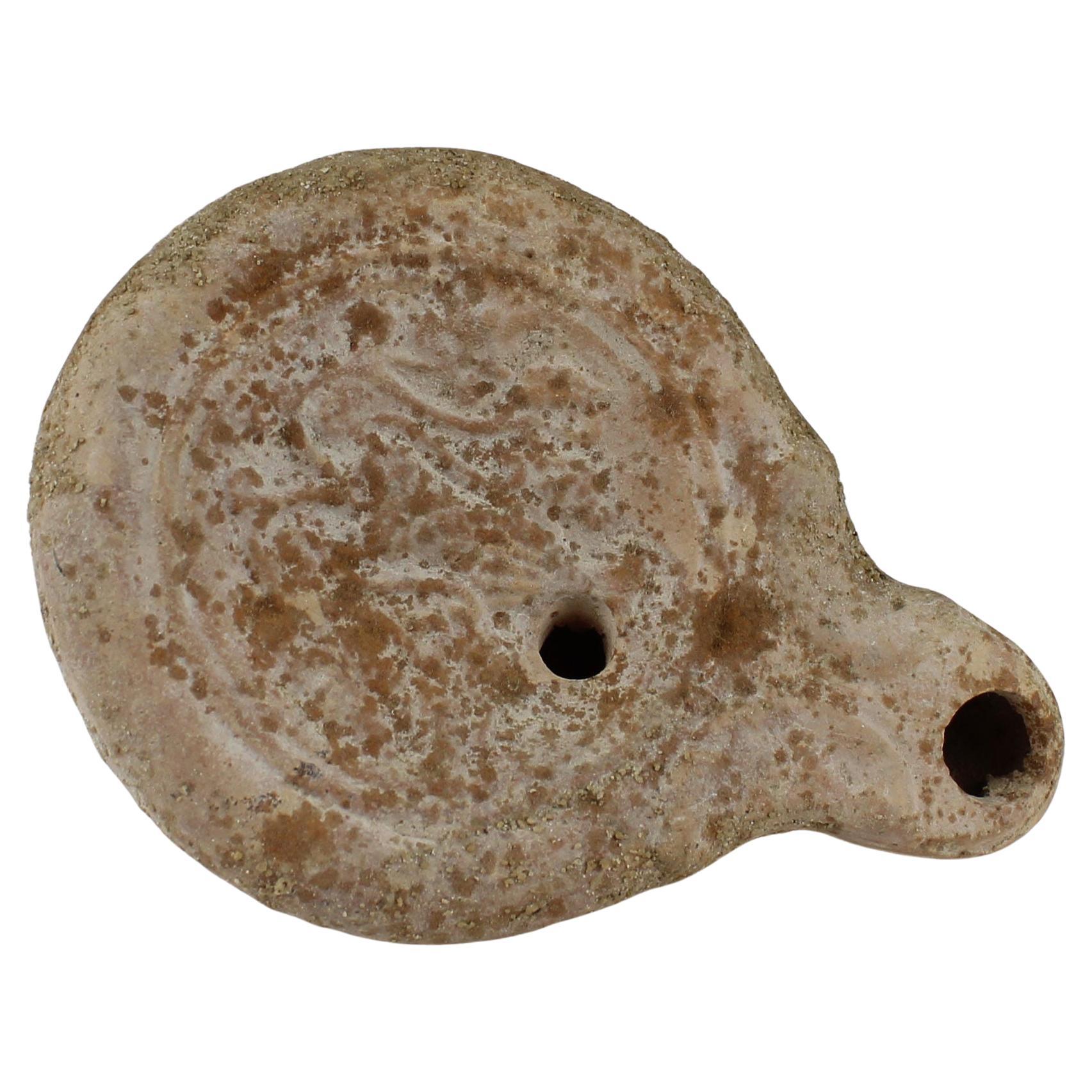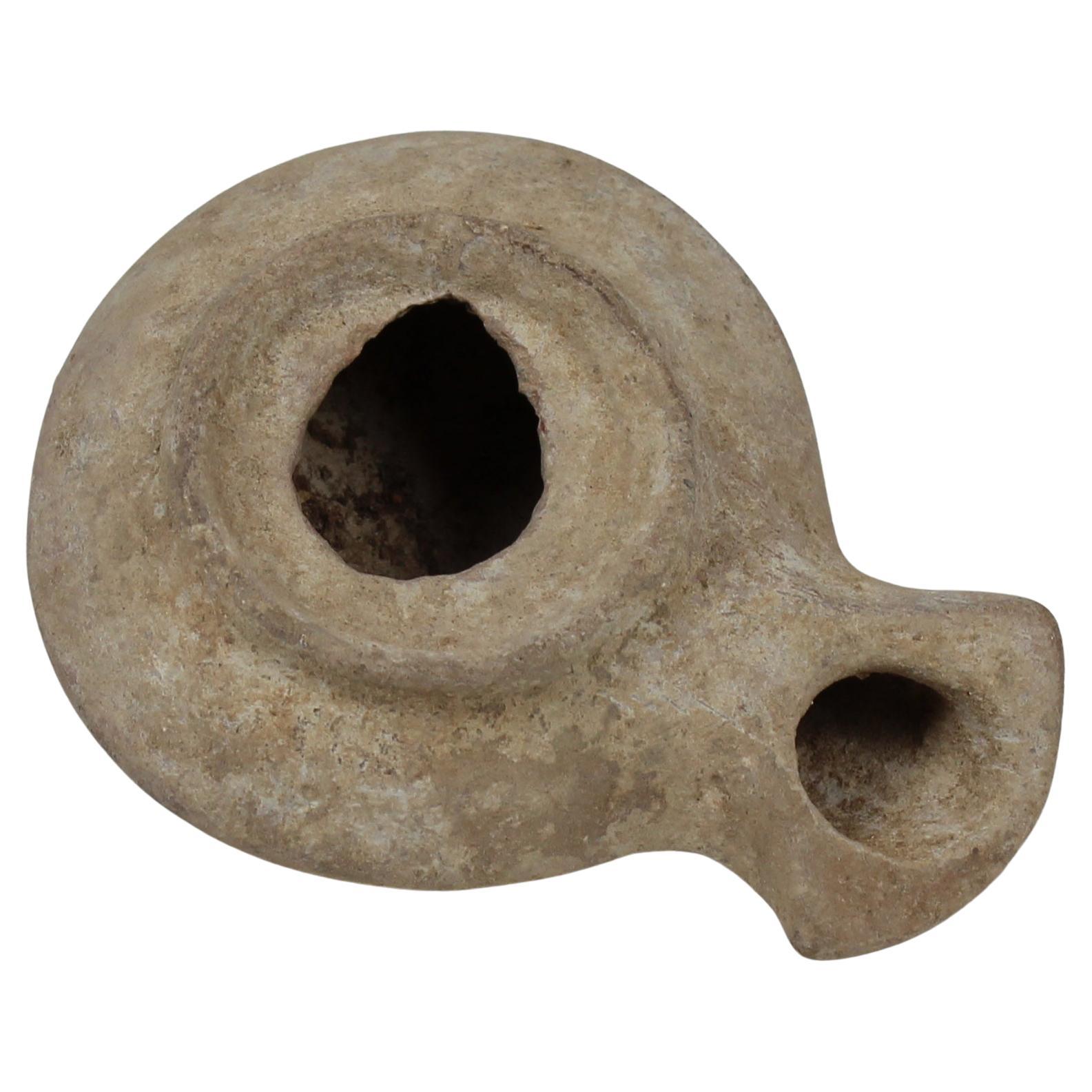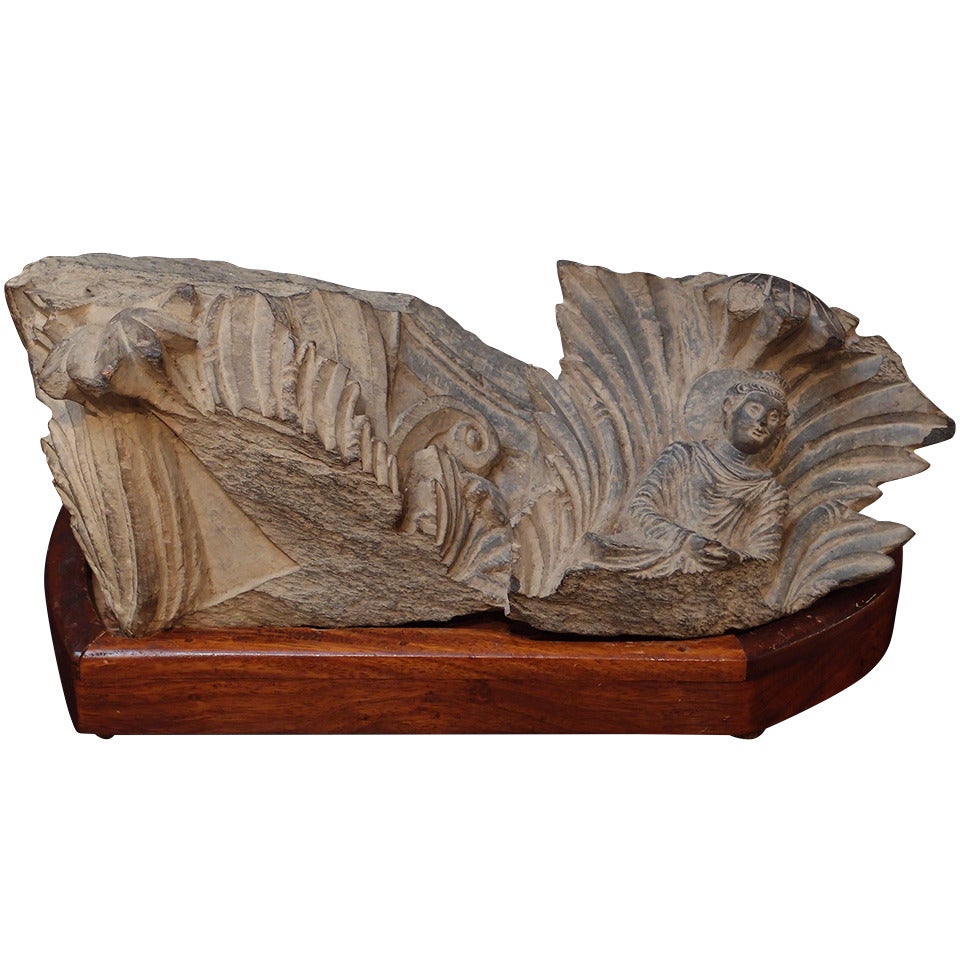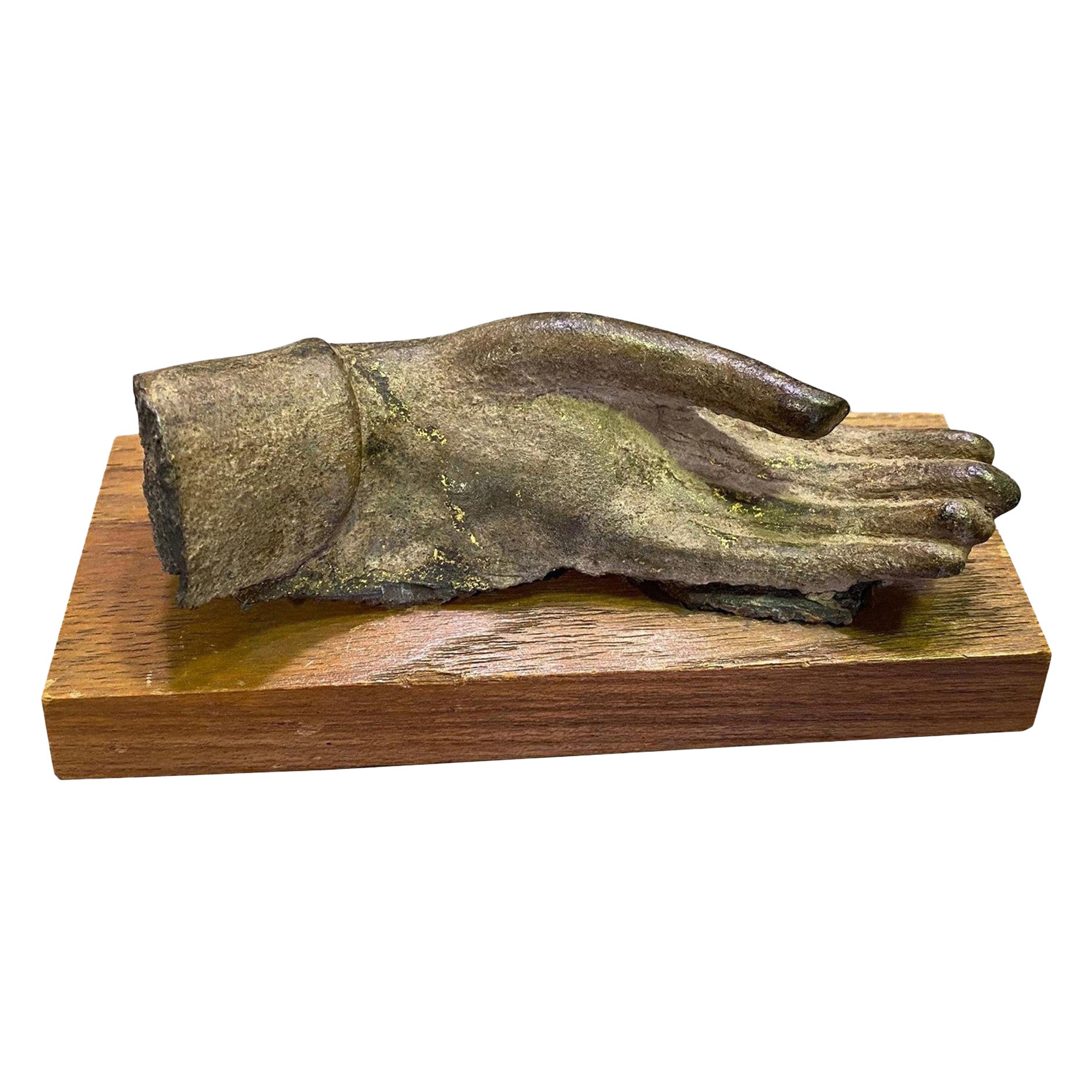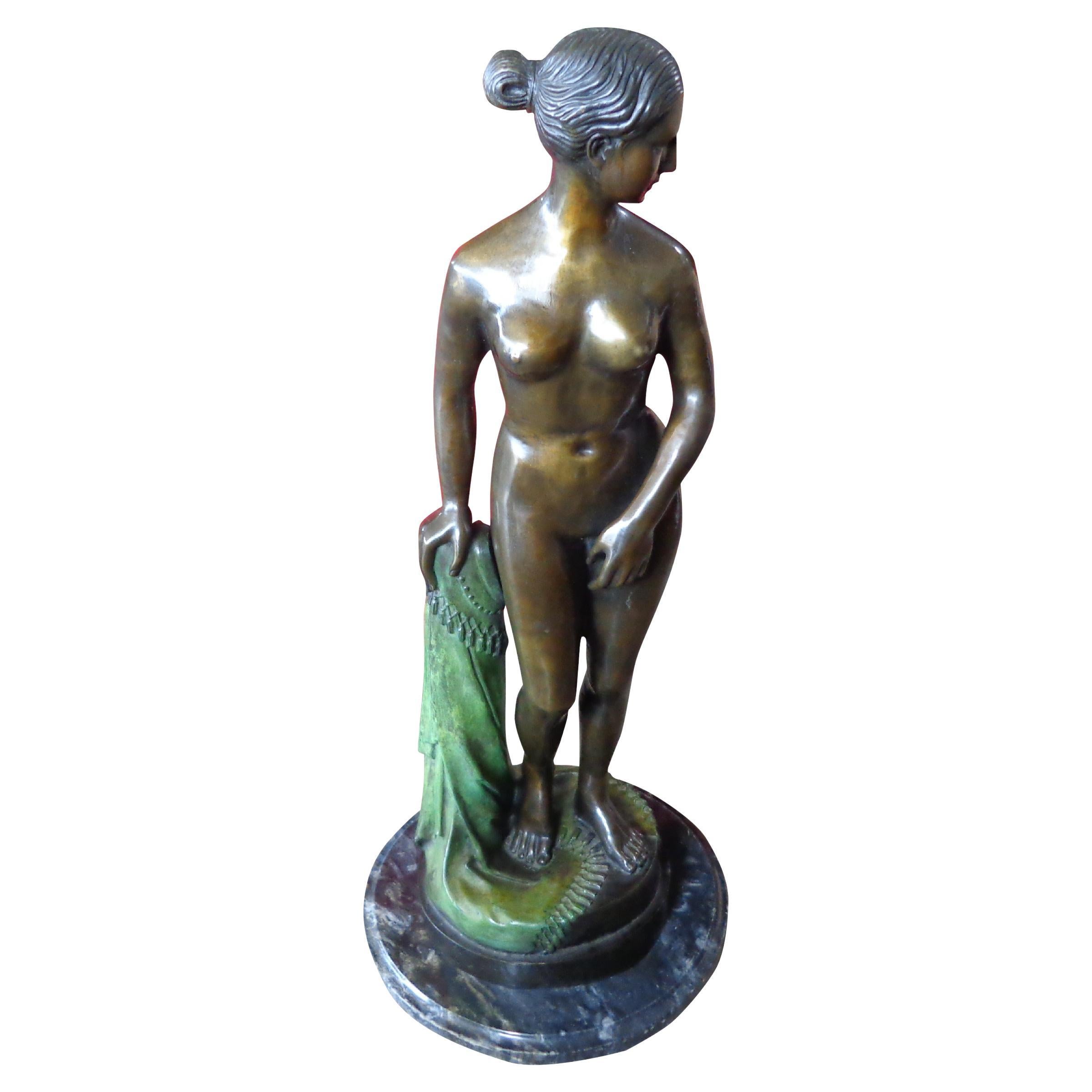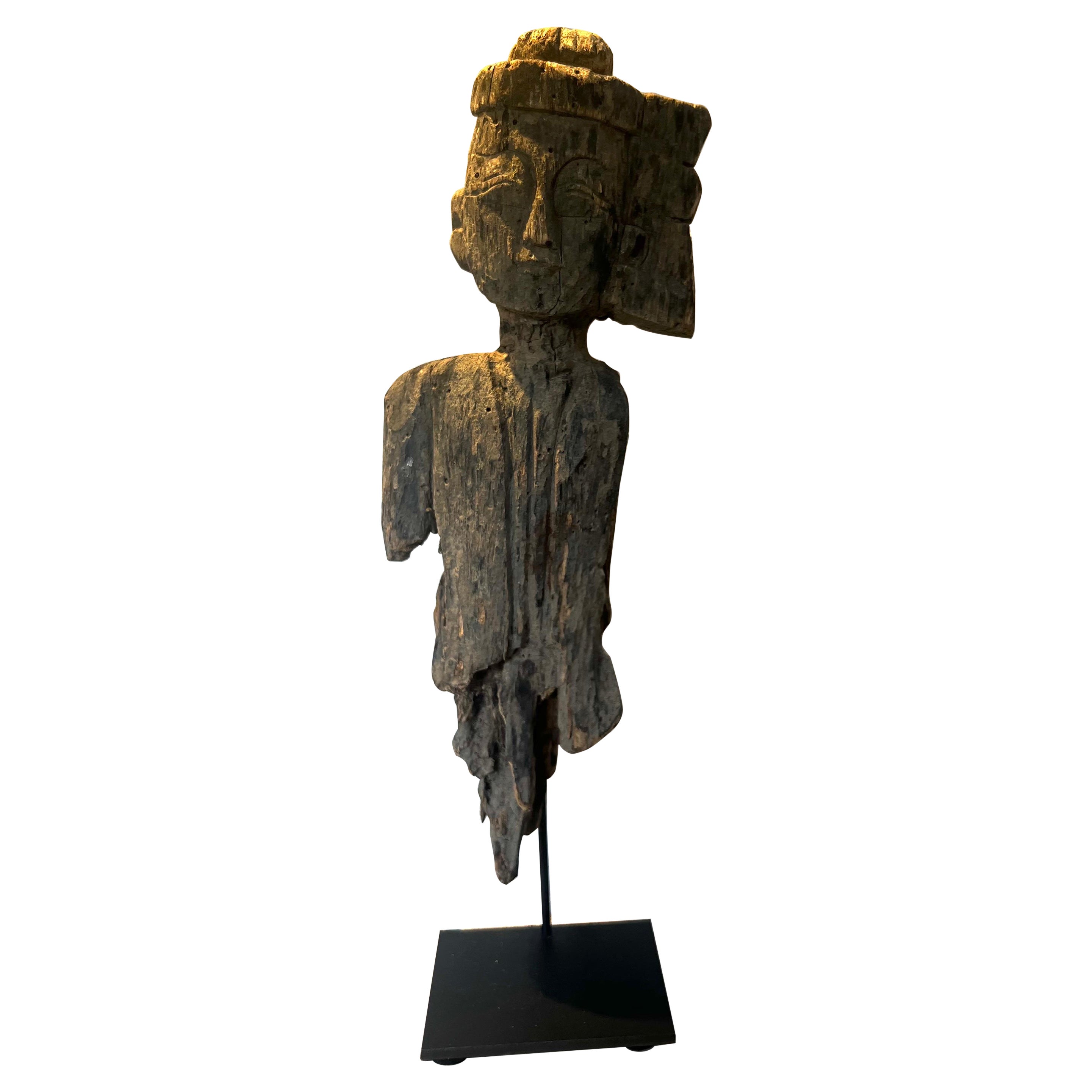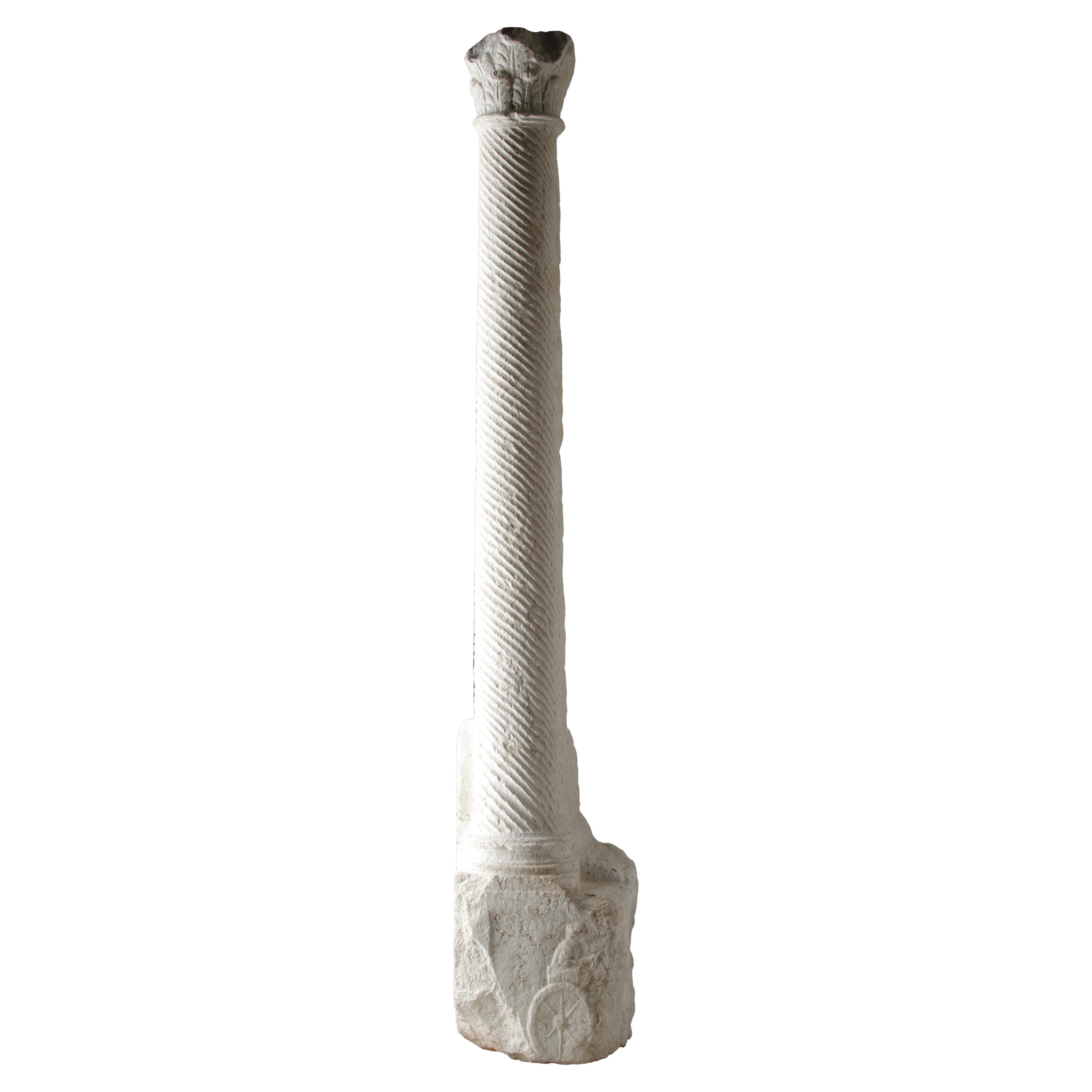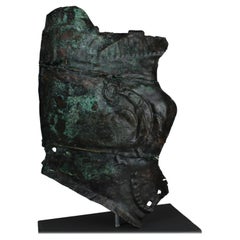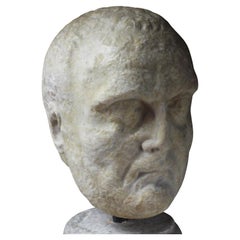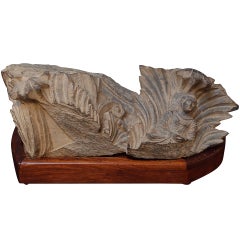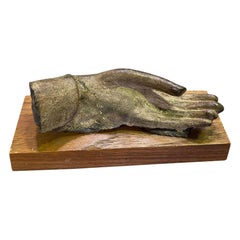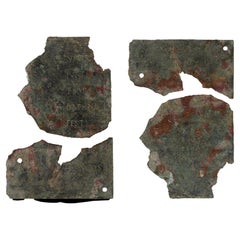
Roman Bronze Military Diploma (Fragment) by the Consuls Ti. Iulio Capito
View Similar Items
Want more images or videos?
Request additional images or videos from the seller
1 of 6
Roman Bronze Military Diploma (Fragment) by the Consuls Ti. Iulio Capito
About the Item
- Dimensions:Height: 5.32 in (13.5 cm)Width: 3.55 in (9 cm)Depth: 0.08 in (2 mm)
- Style:Classical Roman (Of the Period)
- Materials and Techniques:
- Period:
- Date of Manufacture:122 A.D, Hadrian period
- Condition:
- Seller Location:EL CAMPELLO, ES
- Reference Number:1stDibs: LU7382233491882
About the Seller
5.0
Vetted Seller
These experienced sellers undergo a comprehensive evaluation by our team of in-house experts.
Established in 2011
1stDibs seller since 2022
8 sales on 1stDibs
More From This SellerView All
- Roman military cheek piece of a helmet fragment with Jupiter’s eagleLocated in EL CAMPELLO, ESITEM: Military cheek piece of a helmet fragment with Jupiter’s eagle MATERIAL: Bronze CULTURE: Roman PERIOD: 3rd Century A.D DIMENSIONS: 180 mm x 123 mm CONDITION: Good condition PROVENANCE: Ex Alison Barker private collection, a retired London barrister, acquired between 1960s – 1990s BIBLIOGRAPHY: RUCINSKI, E., Get the picture?: Iconography of cheek pieces on Roman Imperial cavalry helmets...Category
Antique 15th Century and Earlier Italian Classical Roman Antiquities
MaterialsBronze
- Roman portrait head of a PatricianLocated in EL CAMPELLO, ESITEM: Portrait head of a Patrician MATERIAL: Marble CULTURE: Roman PERIOD: 1st Century B.C DIMENSIONS: 250 mm x 175 mm x 215 mm (without stand), Life-siz...Category
Antique 15th Century and Earlier European Classical Roman Antiquities
MaterialsMarble
- Roman statuette of Eros-HarpocratesLocated in EL CAMPELLO, ESITEM: Statuette of Eros-Harpocrates MATERIAL: Bronze CULTURE: Roman PERIOD: 1st Century B.C – 1st Century A.D DIMENSIONS: 82 mm x 31 mm CONDITION: Good condition PROVENANCE: Ex Ameri...Category
Antique 15th Century and Earlier Italian Classical Roman Antiquities
MaterialsBronze
- Roman oil lamp with leaves and fruitLocated in EL CAMPELLO, ESITEM: Oil lamp with leaves and fruit, Type Bussiere B III 1 MATERIAL: Terracotta CULTURE: Roman PERIOD: 1st – 2nd Century A.D DIMENSIONS: 20 mm x 65 mm x 90 mm CONDITION: Good condit...Category
Antique 15th Century and Earlier Italian Classical Roman Antiquities
MaterialsPottery
- Roman oil lamp, Type ‘Herodian’, Kennedy 3, Hadad 4Located in EL CAMPELLO, ESITEM: Oil lamp, Type ‘Herodian’, Kennedy 3, Hadad 4 MATERIAL: Terracotta CULTURE: Roman, Judaea PERIOD: 1st Century B.C – 2nd Century A.D DIMENSIONS: 25 mm x 62 mm x 82 mm CONDITION: Good condition PROVENANCE: Ex Jerusalem private collection, acquired between 1975 – 1990. Comes with Certificate of Authenticity and Export license (If you live outside the European Union, We will have to apply for an export licence for your country and shipping will take 3 to 5 weeks.) Oil lamps used during the time of Herod, which falls within the period of the Second Temple in ancient Judea...Category
Antique 15th Century and Earlier Israeli Classical Roman Antiquities
MaterialsPottery
- Bronze Age amphoriskosLocated in EL CAMPELLO, ESITEM: Amphoriskos MATERIAL: Pottery CULTURE: Bronze Age PERIOD: 2400 – 2000 B.C DIMENSIONS: 140 mm x 145 mm CONDITION: Good condition PROVENANCE: Ex Emeritus collection (USA), collec...Category
Antique 15th Century and Earlier Israeli Prehistoric Antiquities
MaterialsPottery
You May Also Like
- An Over Life-Size Powerful Roman Male Portrait Head of Constantine the GreatLocated in London, GBAn Over Life-Size Powerful Roman Male Portrait Head of Constantine the Great (c.272 - 337) Wearing the ‘Imperial Oak Wreath’ the decorative border of his ‘tunic’ can still be clearly seen on the left hand side Marble Italy Early 4th Century AD SIZE: 38cm high, 24.5cm wide, 25cm deep - 15cm high, 9¾ ins wide, 10 ins deep PROVENANCE: Ex Private collection, Cambridge, England note: For a very similar over life-size portrait head of Constantine I (the Great) wearing an identical wreath dating from the early 4th century AD see: Yorkshire Museum, York, inv. no. ‘YORYM’ 1998.23. Found in ‘Eboracum’ (York) in 1823 LITERATURE: Rinaldi Tufi, S., Yorkshire. ‘Corpus Signorum Imperii Romani (Great Britain)’; vol. 1, fasc. 3, Yorkshire. Oxford University Press, 1983; 23, no. 38, pl. 12 In AD 306, Constantine was hailed emperor in the Roman city of York; he was the first emperor to convert to Christianity. Born in Naissus, the son of Flavius Constantius, and Helena, a woman of low birth and a christian. Following his campaigns in the eastern provinces, Constantine was recalled in 305 AD to fight alongside his father in the province of Britannia. After his father’s death in 306 AD, Constantine was acclaimed as ‘imperator’ by his army at Eboracum (York) eventually being declared victorious after the civil wars against emperors, Maxentius and Licinius to become sole ruler of the Roman Empire in 324 AD. Constantine’s Christian belief cannot be underestimated, establishing the foundations of ‘Western Christendom’. In 313 AD he was influential in the proclamation of the ‘Edict of Milan, declaring tolerance of Christianity within the Roman Empire. The Church of the Holy Sepulchre, the purported site of Jesus’s tomb...Category
Antique 15th Century and Earlier Italian Classical Roman Antiquities
MaterialsMarble
- Gandharan Column Capital Fragment with an Image of the BuddhaLocated in Austin, TXA bold and expressive Gandharan carved gray schist column capital fragment, circa 2nd - 3rd century, ancient region of Gandhara. The fragment of a c...Category
Antique 15th Century and Earlier Pakistani Hellenistic Sculptures
MaterialsSchist
- Bronze Siamese Asian Buddha Antiquity Hand Sculpture Fragment, 15th-16th CenturyLocated in Studio City, CAA wonderful and very special piece. This bronze buddha hand sculpture, perhaps a fragment of a larger piece at one time, originally came from the prestigious Doris Wiener Gallery ...Category
Antique 16th Century Asian Sculptures and Carvings
MaterialsBronze
- Bronze Sculpture by Emmanuel VillanisBy Emmanuel VillanisLocated in Pasadena, TXEmmanuel Villanis comes from a family of Italian origin. From 1861, his parents returned to Italy to settle in Piedmont. He had fled Italy because the war of independence broke out, under the threat of Napoleon Bonaparte. In 1871, the artist enrolled at the Albertina Academy of Fine Arts in Turin; he follows the teaching of the sculptor Odoardo Tabacchi (1831-1905). As soon as he finished his studies, his master encouraged him to exhibit: his bust Alda, for example, was presented in Milan in 1881. In 1885, Villanis moved to Montmartre, a district of Paris that he never left. The artist's fame is built on his production of female figures. Aida, Judith, Delilah, Lucretia, Cinderella: her work brings together the great heroines of opera, literature, mythology and the Bible. Villanis also discusses certain types - the Bohemian, the Châtelaine, or the Parisienne - and several allegories, including Painting and Sculpture. Made mainly in bronze, sometimes chryselephantine, his sculptures subtly bear the mark of Art Nouveau, including the lettering of the title, which regularly adorns the base. His play on the patinas further adds to the finesse of the line, making Villanis one of the major sculptors of Art Nouveau. Regarding the casting of bronzes, he worked mainly with the Société des Bronzes de Paris and with Eugène...Category
Antique Late 19th Century European Art Nouveau Antiquities
MaterialsBronze
$3,920 Sale Price20% Off - Early 19th Century Mounted Figural Fragment from ThailandLocated in Chicago, ILThe piece was found in France. the gorgeous patina and losses show this artifact in a very wonderful way. We mounted the pice with hand made iron presented for displayCategory
Antique Early 19th Century Thai Figurative Sculptures
MaterialsWood
- 2nd Century Indian Red Sandstone Fragment of a WomanLocated in Dallas, TXPresenting a stunning little piece of Southeast Asian Indian Antiquity, namely, a Double-sided 2nd Century Red Sandstone Fragment of a Woman. From India, Uttar Pradesh, Mathura. This piece has impeccable Provenance ! It was purchased by a Private Dallas Collector at Christie’s New York Auction on 31st March 2005. Sale Number 1492, Lot No. 43. Christie’s operate a twice yearly auction of Southeast Asian Art & Antiquities in New York in the months of March and September. The sculpture was described as “Property of a European Estate. A Double-sided Red Sandstone Fragment of a Woman. India, Uttar Pradesh, Mathura, Circa 2nd Century.” “Both sides similarly depicting the lower body with a flared sash at left and remains of chained belt: marked with an accession number 1931 on reverse. 8 in (29.2 cm.) high” Provenance: Collection of Prince and Princess Aschwin zur Lippe-Biesterfeld, acquired on 1958?. It carried an Auction estimate of USD 3,000 to USD 5,000 and Sold for USD 2,880 (not including Buyers Premium). Allowing for inflation alone this would be over $6,300 in today’s value. It has substantially increased in value over the years as a RARE piece from a prestigious Collection and a RARE piece of antique Asian antiquity...Category
Antique 15th Century and Earlier Indian Medieval Antiquities
MaterialsSandstone
Recently Viewed
View AllMore Ways To Browse
American Bronze Roman
Von Standard
Roman Inscription
Roman Soldier Art
Caesar Bronze
Gallery L 7
Antique Furniture App
Antique Official Seal
Antique Metal Soldiers
Bronze Augustus
Augustus Caesar
Double Armed
Metal Military Soldiers
Used Vic Furniture
Miss K
Antique License Plate
Antique License Plates
Double V Gallery

